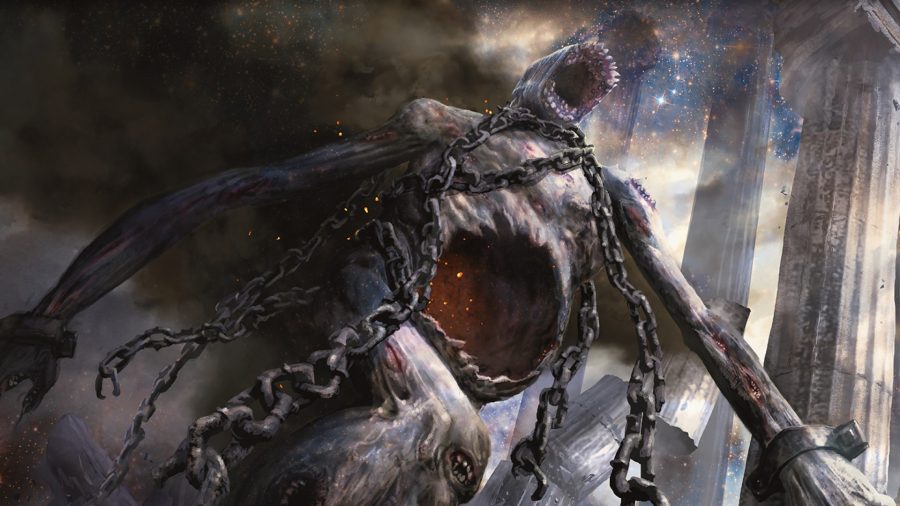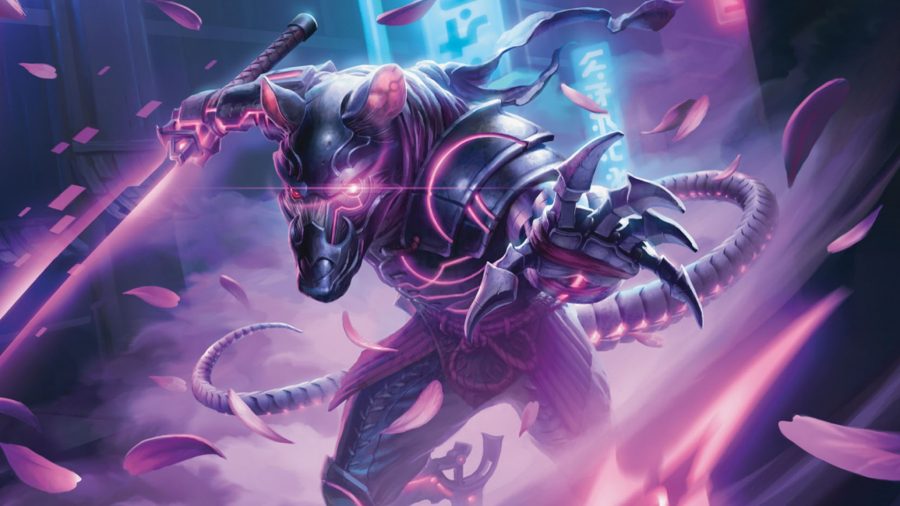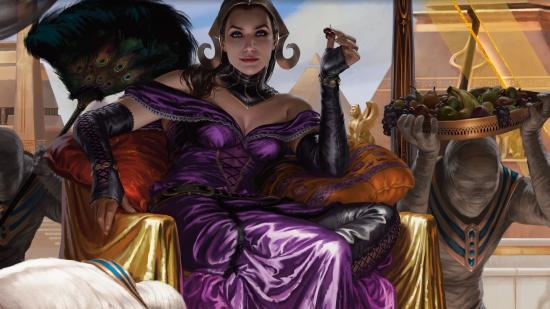In 2018, the way Magic: The Gathering sets got made changed forever. This was nothing new, of course. Wizards of the Coast had reimagined the system – whereby a certain number of sets shared a setting, flavour, and mechanics to form a ‘block’ – before, in 2014. Back then, it cut the number of sets in every block from three to two, to solve the infamous issue of every third set being sort of, well, rubbish. But this was different. Now Magic: The Gathering was saying goodbye to blocks, forever.
For the longest time, I was in two minds about that decision. Yes, unshackling Magic: The Gathering from blocks meant more freedom – the game could spend more or fewer sets on one world, or plane, depending on what the story called for. But on the other hand, blocks provided structure, rigidity, order. Everything a Control player needs.
MTG’s two-block system had a natural rhythm to it. The scene would be set in the first set, and the status quo squashed in the second. In Set One: something untoward is going on in Innistrad; in Set Two: Oh god, everything is a tentacle monster! In Set One: we meet fantasy Ancient Egypt; in Set Two: fantasy Ancient Egypt meets the apocalypse.
At first, doing away with MTG’s blocks caused pretty prominent teething pains. After a yearlong rest on Ravnica, MTG went on a whistlestop tour through the multiverse, with a new plane for every set. Players felt the whiplash. It was exhilarating to see so much mechanical experimentation in Magic, and so many new worlds, but because the block system had been retired, each world and each set of mechanics had less time to shine. Whole MTG sets seemed to get lost in the shuffle. How often does anyone think about 2020’s Theros: Beyond Death, for instance?

Without the block system to provide a natural structure, Magic: The Gathering storytelling hit a brick wall. It became rushed and fragmented, trying to provide set-up and resolution at the same time, in one confusing dollop.
However, with Kamigawa: Neon Dynasty, story in MTG is back, and it’s as though it never left. Wizards has figured out how to tell compelling tales through a TCG again, and I think it’s a sign that Magic has adjusted to travelling at speed. Taking a look at the few Streets of New Capenna spoilers we’ve seen so far, the setting and factions feel rich and well-defined. While it’s obviously early days, I’m expecting, on April 29, a set that feels finished and self-contained.
City map: Everything we know about Streets of New Capenna
It may be, as Magic’s head designer Mark Rosewater has suggested, that because MTG’s creative team has grown, it’s now at the point where it can successfully present a whole plane in one set. Kamigawa: Neon Dynasty felt complete, and Streets of New Capenna shimmers with promise. A post-block future is emerging, and I believe it’s a bright one.
And now, I crave that variety in Magic. The one time we’ve slowed down since War of the Spark, for an Innistrad double feature, my interest waned. By Crimson Vow, I was bored of werewolves, sick of vampires, and tired of things that go bump in the night. I’d still be up for sticking on a plane for two sets, as the block system enforced, provided they each have distinct, separate focuses. But, if Wizards can keep MTG moving, and not do it at the expense of everything else, I’m all for it.

I’ve spoken a lot about story and theme so far, but doing away with blocks had many ramifications for Magic: The Gathering’s mechanics as well. Whereas in a block, sets naturally had mechanical ties to one another, now we’re in the Wild West. (Metaphorically, though a Wild West MTG set would be great; someone write that down).
Without blocks, Wizards of the Coast has to work harder to make sure sets gel with each other. Tribal strategies are much trickier to arrange, for example, as one plane might feature, say elves, heavily, and another might be completely elf-less. Flitting from world to world has necessitated a lot of mechanical experimentation too, and this has caused its problems. The power level went through the roof and some mechanics, like Companion, have felt half-baked.
However, I don’t think the mechanical cohesion that blocks provided is necessary in Magic: the Gathering anymore. Ideally, all sets should work well with each other. There’s a word for mechanics that only play nice with cards from the same set, and it’s not a pleasant one: parasitic.
Ideally, Magic: The Gathering shouldn’t require blocks to tie its cards together, since all sets share the fundamentals of gameplay. We can see from some of the recent best MTG Standard decks that there can still be plenty of mechanical synergy in Standard without blocks. Kamigawa and Kaldheim enchantment cards have smushed together to bring us the fun of Naya Runes, for instance. Not relying on blocks for mechanical cohesion is good for Standard, and it’s also great for other formats, like Commander.
So, while I’ve occasionally lamented the loss of MTG’s blocks, I’ve now passed through all the stages of grief. I’ve gone through Denial, through Bargaining, and now I’m at ‘I’m Glad They’re Dead’. That’s the one after Acceptance, right?
